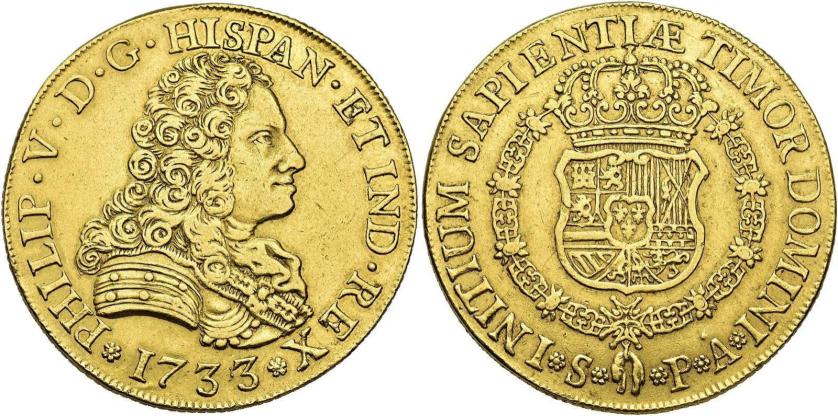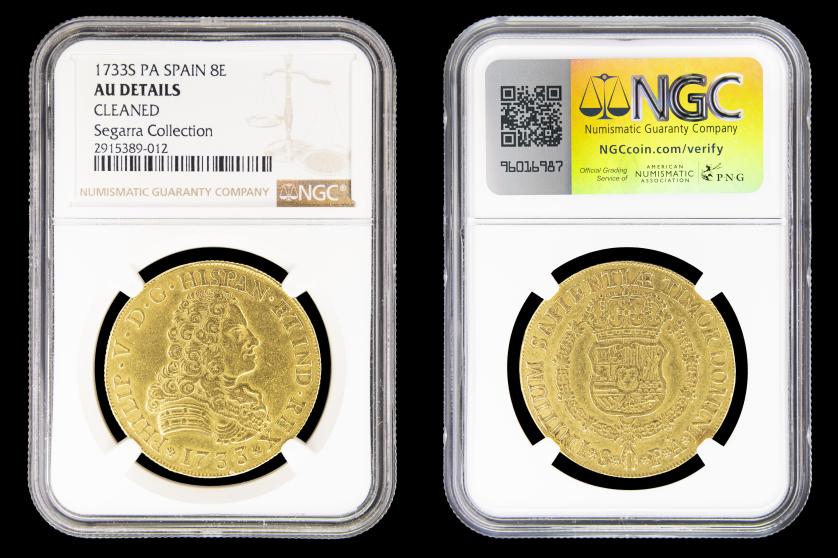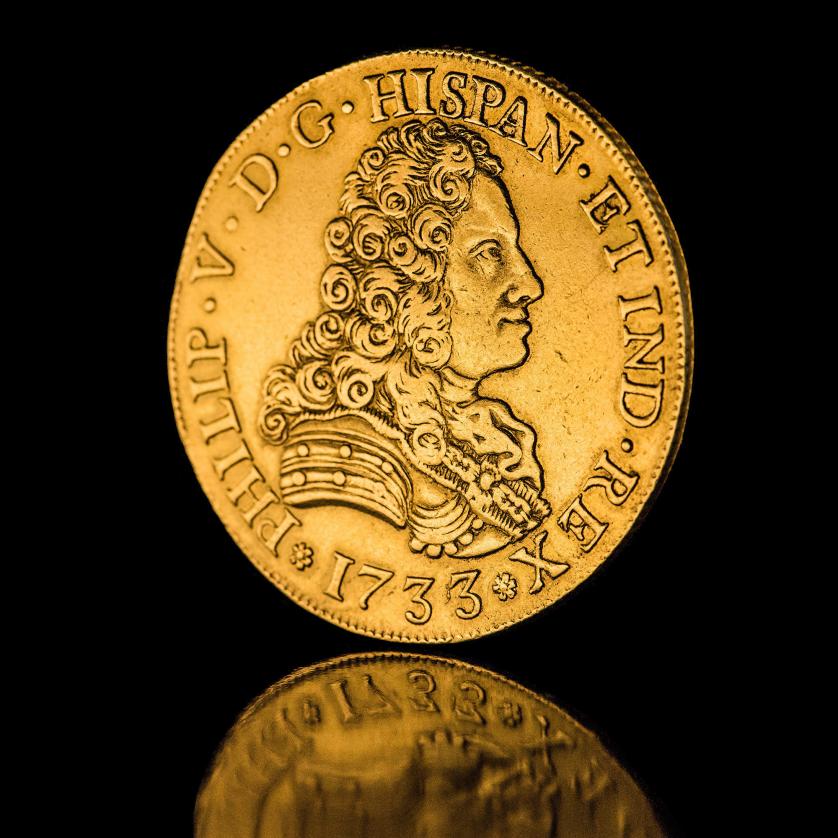Lot 1068
Auction date
27-06-2024 12:30 CET
Finalized
Starting price 3.000 €
SOLD BY 4.800 €
PHILIP V
Philip V. 8 escudos, 1733, Seville, PA, Without value indication. AU 27,02 g. 35,5 mm. AC-2308. Onza-531. Encapsulated by NGC AU Details (2915389-012) . Very rare.
Categories
NumismáticaThe Seville mint was one of the oldest and most significant mints in the Spanish monarchy, as it had coined practically without interruption since the Visigothic period. Its importance surged in the early 16th century with the establishment of the Casa de Contratación de Indias (House of Trade) in Seville in 1503, which became the chosen location for minting most of the metal arriving from the Americas. This necessitated the construction of new facilities, which were completed in 1587. From then on, these underwent numerous renovations and improvements until the earthquake of 1755 left much of the complex in ruins. Despite the challenges posed by the War of the Spanish Succession and subsequent conflicts with other countries, the Seville mint continued to mint onzas of Philip V almost without interruption. Consequently, it became the peninsular mint that coined onzas for the longest period during his reign, highlighting its importance compared to the limited production of these coins in Madrid and Segovia. This collection includes almost all of its mintings, starting from those of 1701 featuring the old coat of arms of the monarchy. This design, lacking the fleur-de-lis and the collar of the Order of the Holy Spirit, is known as the coat of arms of the Habsburgs and bears the mint and the assayer’s mark on the obverse next to the coat of arms. Later in the same year, production shifted to coins featuring the new coat of arms, incorporating the fleur-de-lis and the collar of the Order of the Holy Spirit between the coat of arms and the collar of the Golden Fleece. This change required relocating the denomination and the mint and assayer’s marks to the reverse, a pattern that persisted in the following years. The collection contains coins of this type from the years 1702, 1703, 1704, 1705, 1707, 1708, 1709, 1710, 1711, 1712, 1713, 1714, 1715, 1716, 1717, and 1718. In the onza of 1719, the collar of the Order of the Holy Spirit disappears, leaving only the cross of the Order placed on the Golden Fleece. As a result, the denomination and the mint and assayer’s marks were moved to the legend on the reverse, maintaining this new configuration in the pieces of 1720, 1721, 1722, 1723, 1725, 1727, 1728, and 1729. The ordinances of June 9, 1728, marked the end of the traditional hammering technique in minting. It was mandated that all minting operations, both in the Peninsula and in the Indies, must use screw presses or water mills, regardless of whether they were powered by human labour or water. Additionally, it was specified that all coins had to be “circular in shape with a laurel-shaped rim on the edge,” aiming to put an end to the detrimental clipping. It was also decreed that the matrices of the punches used for making the dies of the coins must be exclusively engraved by the engraver of the Madrid mint, from where they would be dispatched to the rest of the mints. All these changes were initially implemented in Madrid. However, it’s important to note that Philip V decided to relocate the court to Seville, where he permanently resided between 1729 and 1733, a period known as Lustro Real. Consequently, in 1729, the new model of bust with a large wig on the obverse began to be minted in Seville, depicting the king in armour. This change was ordered on November 23, 1728, following a directive to replicate the monetary bust based on a profile effigy of the king made by Mr. Rau. On the reverse side, the heraldic design used previously was retained, with the addition of a religious phrase INITIUM SAPIENTIAE TIMOR DOMINI ‘the fear of the Lord is the beginning of wisdom’ (Psalms 111,10) around it, and the placement of the mint and assayer’s marks on the sides of the Golden Fleece. It’s important to mention that the Sevillian onza with the bust from 1729 lacks an assayer’s mark, and the king’s name appears as PHILP. Similarly, the 1730 onza already features the king’s name as PHILIP, and it isn’t until 1731 that the assayers (P-A) reappear, remaining so in those coins from 1732, 1733, 1734, 1735, and 1736. The last pieces of the collection are the onzas from 1737 and 1738, bearing the mark P-J. The latter represents the last year that this denomination was minted at the Seville mint during the reign of Philip V. Furthermore, all the assayers of the period are present in the collection: Manuel Manso (M:1701-1703, 1707-1719), Juan Manso (J:1702-1703), the unknown P (1703-1706), Joseph García Caballero (J:1719-1727), Pedro Bernardo Gordillo (P:1728-1729) and, in the onzas with bust, the years without an assayer’s mark (with double S:1729-1730) and then with two assayer’s marks, as mandated by the ordinance of July 16, 1730, those of Pedro Bernardo Gordillo and Antonio Moreno (PA:1731-1736), and finally those of Pedro Bernardo Gordillo and José Antonio Fabra (PJ:1737-1742).
Recomended lots
Confirm your maximum bid
You are bidding for €
At the time of auction we will contact you by phone:
Confirm your maximum bid
You are bidding for
€
Loading…
Conecting with the server
Are you sure you want to buy the lot?
Confirm your maximum bid
You are bidding for
€





